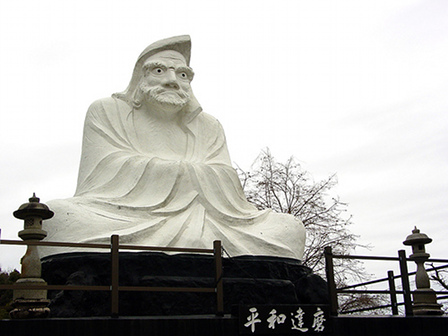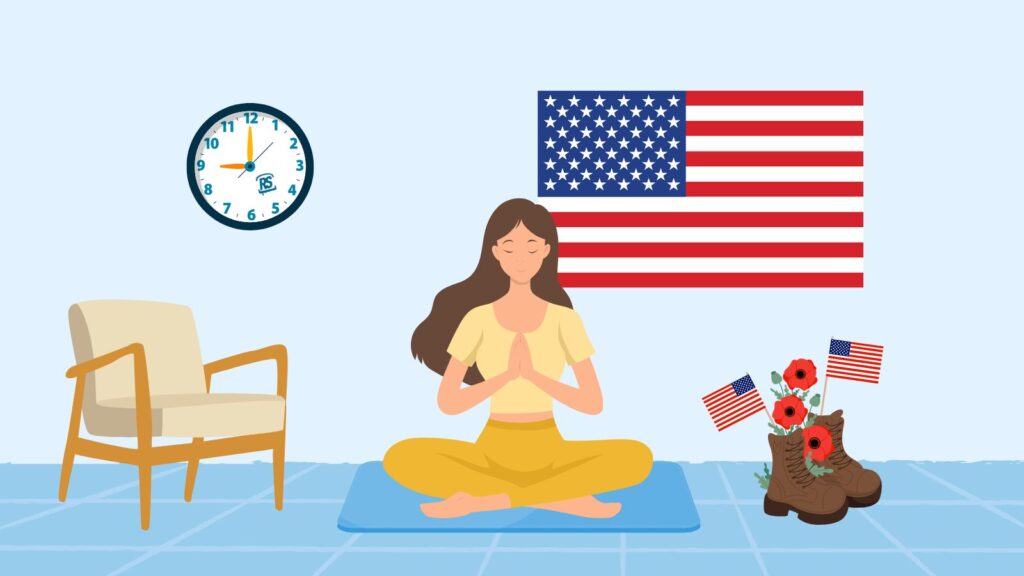‘If You Meet the Buddha on the Road, Kill Him’
The intentionally provocative line above is a ‘Koan’, one of many coined by Chinese Zen master Linji Yixuan, progenitor of the Rinzai sect of Zen Buddhism. Rinzai, established in 12th century Japan, along with Soto and Obaku, is one of the three schools of Zen in Japan. South Indian Brahmin monk Bodhidharma, who lived during the fifth century CE, is traditionally credited for the transmission of Ch’an (Sanskrit: Dhyana, Japanese: Zen) to China, from where it migrated to Japan.
A ‘Koan’ is a non sequitur, a seemingly paradoxical statement or question that cannot be grasped by the logical mind. For example : ‘What is the sound of one hand clapping?’ Its purpose is to subvert the causal nature of consensual reality, thereby inducing a sudden, intuitive insight or revelation into the underpinnings of consciousness itself. The Japanese referred to this moment of ecstatic truth as ‘Satori’.
Zen master Dogen said that in order to perceive reality we must “drop mind and body”. In other words, it is essential to drop all habits of thought and preconceptions in order to understand the truth. The Koan forces the student to face this type of thinking. Therefore, ‘killing the Buddha’ symbolizes the annihilation of all mental constructs comprised of name and form (Sanskrit Namarupam), including the Buddha, in order to grasp the true nature of reality.
The word Zen is derived from the Chinese word Ch’an, which in turn is a cognate of the Sanskrit term Dhyana. According to the Yoga sutras, Dhyana, along with Dharana and Samadhi, comprise ‘Samyama’, a term that summarizes the comprehensive psychological understanding of absorption in the object of meditation.
Shakyamuni Siddhartha Gautama the Buddha was a catalyst for the global dissemination of the Vedantic concept of non-duality or ‘oneness of opposites’, which predated him by at least three thousand years. The core Mahayana teachings of the Prajna Paramita, are basically a distillation of the Vedanta, beautifully summed up in the opening prayer of the Isha Upanishad : Om. That is the absolute, this is the absolute; from the absolute, the absolute becomes manifest; when the absolute is added to or taken away from the absolute, the absolute remains.Om. Peace! Peace! Peace!
In mathematical terms, Infinity, plus or minus Infinity, equals Infinity i.e Energy or Matter can never be created or destroyed, but only can be transformed from one state of being to another. All known (and unknown) objects of the world have the same essence since they are manifestations of the limitless Brahman.
Interestingly, Einstein was the first to recognize the truth of Advaita with his famous equation: E= MC2. His understanding of the innate unity of all creation is beautifully articulated in his quote, “A human being is a part of the Whole, called by us the ‘Universe’, a part limited in time and space. He experiences himself, his thoughts and feelings, as something separate from the rest – a kind of optical delusion of his consciousness. This delusion is a kind of prison for us, restricting us to our personal desires and to affection for a few persons nearest to us. Our task must be to free ourselves from this prison by widening our circle of compassion to embrace all living creatures and the whole of Nature in it’s beauty.”
A PERSONAL JOURNEY
After years of studying the scriptures, on a personal level I felt that the purity of Samyama had been clouded by intellectual sophistry and embellishment over the millennia, and perhaps a departure from dry academia would be necessary to taste the essence of the teachings.
The simplicity and spontaneity of the Zen tradition appeared to be an attractive antidote to the voluminous tomes of eastern philosophy, which fascinating as they were, could only take one so far and no further. After making some enquiries, I soon found myself knocking at the gates of Yokoji Zen Mountain Center in the San Jacinto mountains.
Yokoji was built at an altitude of 6000 feet and situated about halfway between Los Angeles county and Palm Springs. It sat on a 160 acre plot and boasted of gorgeous views, stunning sunsets, crisp, cool climate and a rich vegetation hosting a wide variety of plant and animal communities.
The daily routine at Yokoji consisted of noon, afternoon and evening Zazen or sitting meditation sessions, of two hours each, interspersed with four to six hours of hard physical labor on the premises. The work component was an integral part of the Zen system and could be anything from chopping wood to mopping floors to kitchen detail to cleaning toilets, raking leaves etc.
The work assignments were executed by motley crews of three to five people led by their respective supervisors. Placed above the supervisors were ‘senior students’, long term residents, who led ceremonial functions in the Zendo or meditation hall, and a few notches above them were the ‘Eno’ (enforcer of the code of conduct) and finally the ‘Roshi’ or head of the monastic order, and his ‘Jisha’ or assistant. The hierarchy was rigid and atavistic, presumably harking back to its medieval origins in Shogun-era Japan.
The supervisors and enforcers, jokingly called ‘dharma police’ by residents, were given Japanese names like Yugen, Jokkai, Hakujo and did not hesitate to admonish inmates who stepped out of line. David, the Eno, seemed to take his role a tad too seriously and had dispensed with social graces entirely.The constantly chafing micro-management was supposedly beneficial for ‘training the mind’. Everyone had to be dressed in traditional black robes, adding to the surreal vibe. The set-up was strangely reminiscent of the film ‘One Flew Over The Cuckoo’s Nest’.
In my time at Yokoji, I encountered a colorful cross-section of spiritual aspirants, with widely divergent backgrounds. Among them was a recovering alcoholic, a medical cannabis cultivator, a retired rock ‘n’ roller, a heart surgeon, a screenwriter, a Mexican au pair, and an Argentinian wine maker.They had all surrendered their individual identities to merge with the overriding zeitgeist at the Center.
I wasn”t quite sure whether to be amused or feel compassion for these hapless souls, who like myself, had come here seeking answers to the eternal quandary of human existence. We were urged to ‘watch the reactions within’ to mental obstacles or manifestations of the ego that might arise under pressure, and to ‘use the resistance’ as a tool to break through delusion and conditioning. It was a twist on the age-old dilemma of how to deal with authoritarianism in personal and political life.
The Dalai Lama often urged his fellow Tibetans to deal with Chinese aggression and cultural imperialism by viewing one’s personal demons and tormentors in a compassionate light, as a device to strengthen the practice in the face of insurmountable odds. To transcend the duality of pain and pleasure, one had to grasp the inherent emptiness of both by observing the constant rising and falling of the five ‘Skandhas’ (Sanskrit) or Aggregates: Rupa or Form (matter), Vedana or Sensation (feeling), Samjnya or Perception (Conception), Samskara or Mental Formations (Impulses) and Vijnana or Consciousness (discernment).
Buddhist soteriology, derived from the much older Samkhya philosophy, posits the five Skandhas as functions or attributes that give rise to the false notion of ‘Self’. The Buddha taught that nothing among them was really ‘I’ or ‘Mine’ and that ultimate liberation, Moksha or Nirvana could only be realized by penetrating the nature of the aggregates as intrinsically empty of independent existence. The deceptively simple Koan, “who drags this corpse around?” touches upon the essence of false identification with the ‘self’, with sense objects and their ripple effect across the psychophysical hierarchy enumerated in Samkhya.
The Buddha explains the emptiness of the aggregates by using the analogy of a chariot (identical to Lord Krishna’s instruction to Arjuna in the Bhagwad Gita). The identity of a ‘chariot’ is predicated on the aggregation of its individual parts, therefore it comes into ‘being’ only when the five aggregates are available. The constituents of ‘being’ too are unsubstantial in that they can only function in relation to each other i.e. their very existence is interdependent, like the chariot as a whole. Rather than an ontological thought experiment, the chariot metaphor is a caution against conceptual literalism. Siddhartha Gautama was known to undermine the misleading character of nouns as solidified concepts possessing substance.
ONLY HUMAN
Yokoji had been established in 1981 under the auspices of the White Plum Asanga, created by the late Hakuyu Taizan Maezumi. Charles Tenshin Fletcher, an Englishman, who received Dharma transmission from Maezumi Roshi, is the current abbott in residence. His two primary assistants, David aka Jokkai and Jim aka Yugen, both British, were residing in the U.S on a ‘religious visa’, and over the years had successfully navigated the immigration system to stay on in the country.
Maezumi Roshi, the erstwhile founder of Yokoji, had a colorful and chequered past. In addition to being a declared alcoholic who had undergone treatment at the Betty Ford clinic, he was also a serial womanizer who had conducted sexual affairs with a number of female disciples, including some who had received Dharma transmission from him, compelling his wife, children and several monks to leave the Sangha. He passed away ignominiously, drowning in a hot tub in Japan, where he had been drinking himself to oblivion all week.
In spite of his flaws and peccadillos, Maezumi Roshi was renowned for his ‘awakened Buddha nature’. According to authors Steven Heine and Dale S. Wright in their book Zen Masters, “Maezumi was by all accounts an impressive Zen master – someone who it was impossible not to love and respect – but with weaknesses and vulnerabilities that derived from the simple fact that he was also finite and human. While living a truly profound and visionary Zen life, Maezumi Roshi was at the same time mortal and vulnerable to the tragedies of life.”
Indeed, the human condition was a pervasive and all encompassing aspect of Zen practice. Maybe that is what made it so potent and transformative: the fact that there was no escape from overwhelming emotional states or human weaknesses while engaged in Zazen. That daily life, work and interactions were not separate and distinct from the practice itself. That every demon and ugly carcass from the past could arise at any given moment and the warrior had no choice but to face them, like the Buddha faced his Mara. The mind was a receptacle for the sublime, the mundane and the ungodly – treating them all with equal diffidence, and then slaying them with the sword of insight, was the true revolution, the only jihad. Jim Morrison’s famous line, ‘Kiss the snake on the tongue’, came to mind more than once.
At the end of the early morning or late evening sessions, we were invited to ‘Dokkusan’ or private consultation with Roshi Tenshin. He was strikingly down to earth and projected an innate simplicity and compassion. He said that thoughts were no more than ‘secretions of the mind’ and one must never try to suppress them, only strive to cultivate a space between them and the reactions they produced, eventually causing delusions to fall away. ‘Shikantaza’ or ‘just sitting’ was the only way to achieve this.
On hearing about my irritation with the authoritarianism that pervaded the center, he responded by describing how strong emotions like anger could be used as tools and the key was not to succumb but to transform the powerful energy they contained. He did however agree with the need to simplify the practice and make it more relevant to contemporary times.
We also discussed the need to incorporate the intellectual aspects and pillars of traditional Buddhism into the practice as most people weren’t ready to plunge headlong into the immediacy of pure Zen without first establishing an epistemological foundation.
KISS THE SNAKE ON THE TONGUE
In the days and weeks of intense meditation that followed, repressed memories, sensations and a billion random thoughts rained down on me like multi-colored confetti at a victory parade. It took a huge effort to merely keep sitting on the mat and not storm off into the wilderness and shout at the hills. I could feel toxic residues seeping from the subconscious to the surface and was constantly in the churn of a great battle, entirely within my own head. All accumulated theories and constructs fell away in the heat of war, till only the Witness remained, teetering precariously at the edge of a swirling vortex.
At the end of one such harrowing session, I opened my eyes to the statue of Tibetan deity Manjusri, seated on a roaring lion in the center of the Zendo. The image of Manjusri taming a powerful beast, captured the essence of Zazen: that the practice could contain the most fearsome states of mind, and ‘just sitting’ was the greatest battle that a true warrior could undertake.
In Mahayana Buddhism life on earth is comparable to people dwelling in a house that is being razed to the ground by a blazing fire. Deluded beings perceive this world as the only reality, obsessing over transient and meaningless pleasures without realizing that the house is on fire and will soon burn down – a metaphor for the inevitability of death. A Bodhisattva is one whose ultimate goal is to free all sentient beings from Samsara and its cycle of death, rebirth and suffering.
After the retreat, upon returning to life in the city, the most relevant and lingering impression I took away was that of the Bodhisattva – ‘the heroic one’: an enlightened being who motivated by great compassion, relinquishes final liberation to work towards the Buddhahood of all sentient beings. He can be found at work in the most challenging of environments, such as brothels, warzones and leper colonies.
In all humility I don’t think I”m up to the challenge, as of yet. There lies a long road ahead before I arrive at that exalted state. But there is no escaping the truth of the human condition – with all its blood, guts and glory. Clearly, salvation cannot be found by retreating from the meat-hook realities of mundane existence.
Kissing the snake on the tongue is the only option.
Image by ??? courtesy of Creative Commons license.














